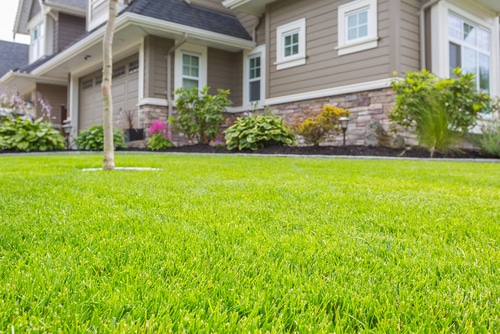

Symptoms Calling for Lime
Briefly, your lawn is in need of liming when the soil is too acidic. Since the majority of plants and grass will not grow properly in acidic soil, you may observe your lawn losing its usual vigor if it is suffering from excess acidity. Grass may turn yellow, and weeds, which do thrive on acidity, may abound. You may also observe the appearance of lawn moss and an increase of harmful insects. All of these changes can occur when the pH level of the soil is too low, and lawn treatments for these problems may not have good results when faced with acidity.
The Cause of Acidity
Acidity often occurs because of an insufficiency of calcium, magnesium, or potassium. Water from rain or watering can cause a decrease in these nutrients, for example, leaving a low pH level behind. An excess of nitrogen from fertilizer can also bring about a low pH, and even pollution affects the soil.
The Benefit of Lime
Lime adds calcium carbonate and magnesium carbonate to your soil to increase pH levels, thereby achieving the conditions necessary for the absorption of nutrients and thus the growth of plants. When the pH is somewhere in the neutral range, which is around 7, plants can best absorb and use the nutrients in the soil. However, when the pH is too far below 7, the nutrients cannot function in the same way. Lime brings the soil to a state which enables nutrients to work.
Applying Lime
Whether or not you observe symptoms, it is wise to have your soil type, and its pH tested. Should your lawn prove to be acidic, this information will help determine the quantity of lime required. It is best to wait to make use of this data, however, until the danger of freezing temperatures has passed or, if the weather is already hot, until autumn.
Nurturing Your Soil First
Although spring can make you eager to jump into the more colorful part of caring for your lawn, you may be wasting your time if you don’t first check whether your soil is in prime condition. Exerting yourself to prepare your soil properly not only will make your work easier throughout the growing season, but it will also give you a richer landscape to enjoy. There may be extra effort, but the effect is worth it.






